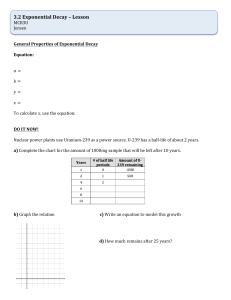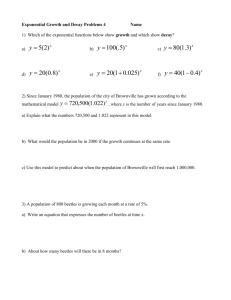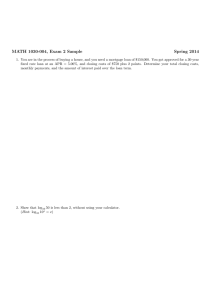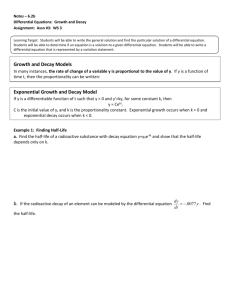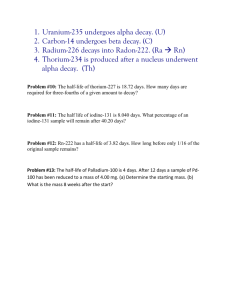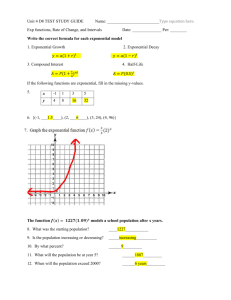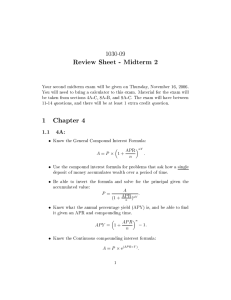Exponential Decay Lesson
advertisement
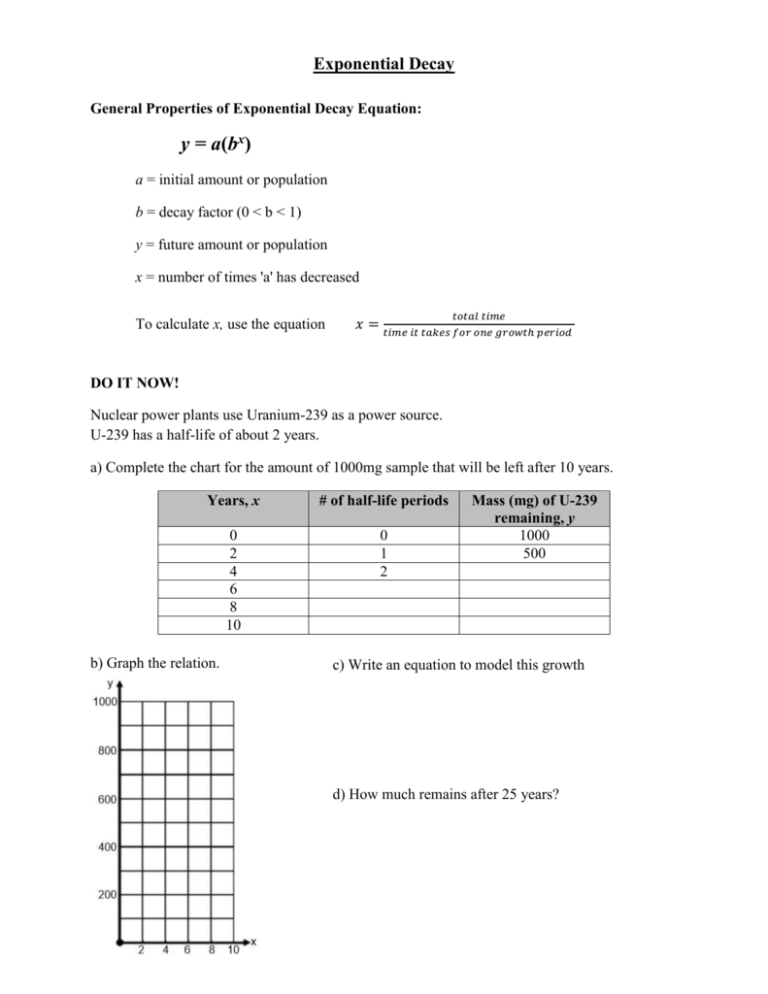
Exponential Decay General Properties of Exponential Decay Equation: y = a(bx) a = initial amount or population b = decay factor (0 < b < 1) y = future amount or population x = number of times 'a' has decreased To calculate x, use the equation 𝑡𝑜𝑡𝑎𝑙 𝑡𝑖𝑚𝑒 𝑥 = 𝑡𝑖𝑚𝑒 𝑖𝑡 𝑡𝑎𝑘𝑒𝑠 𝑓𝑜𝑟 𝑜𝑛𝑒 𝑔𝑟𝑜𝑤𝑡ℎ 𝑝𝑒𝑟𝑖𝑜𝑑 DO IT NOW! Nuclear power plants use Uranium-239 as a power source. U-239 has a half-life of about 2 years. a) Complete the chart for the amount of 1000mg sample that will be left after 10 years. Years, x # of half-life periods 0 2 4 6 8 10 0 1 2 b) Graph the relation. Mass (mg) of U-239 remaining, y 1000 500 c) Write an equation to model this growth d) How much remains after 25 years? Ex1: Plutonium-239 has a half-life of 24 years. Find the amount of a 50mg sample left after 35 years. _____________________________________________________________________________________ If exponential decay is given as a percent use the equation: y = a(1 - r)x a = initial amount r = growth rate (given as a percent) x = # of times "a" has been decreased Ex 2: You buy a new car for $24,000. The value of the car decreases by 16% every year. How much will the car be worth in 8 years? Ex 3: An adult takes 400mg of Advil. Each hour, the amount of Advil in the adult's system decreases by about 29%. How much Advil will be left after 4 hours? Ex 4: U-239 has a half-life of about 2 years. If you start with a 1000 mg sample, how long will it take to decay to 10 mg?
